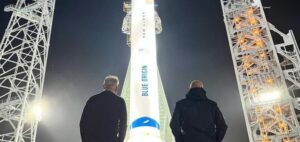OpenAI recently unveiled Sora, a new generative AI system designed to create short videos based on text prompts. Although Sora is not yet accessible to the public, the remarkable quality of the sample outputs released by OpenAI has sparked both excitement and apprehension.
The sample videos showcased by OpenAI, reportedly generated directly by Sora without any alterations, depict scenarios ranging from “photorealistic closeup video of two pirate ships battling each other as they sail inside a cup of coffee” to “historical footage of California during the gold rush.”
Upon initial inspection, it can be challenging to discern that these videos are AI-generated due to their high quality, lifelike textures, dynamic scenes, camera movements, and overall consistency. OpenAI CEO Sam Altman also shared some videos on X (formerly Twitter) in response to user-provided prompts, further demonstrating Sora’s capabilities.
Sora operates by integrating functionalities from both text and image generating tools within what is termed as a “diffusion transformer model.”
Transformers, initially developed by Google in 2017, are a category of neural networks widely recognized for their application in extensive language models like ChatGPT and Google Gemini.
On the contrary, diffusion models serve as the backbone for numerous AI image generators. These models initiate the generation process with random noise and progressively refine it towards producing a coherent image that aligns with the input prompt.
Creating a video involves assembling a sequence of such images. However, maintaining coherence and consistency between frames is crucial in video generation.
Sora employs the transformer architecture to manage the relationship between frames in video sequences. While transformers were originally designed to detect patterns in tokens representing text, Sora adapts this concept by using tokens representing small patches of space and time.
Although Sora is not the first text-to-video model, previous models include Emu by Meta, Gen-2 by Runway, Stable Video Diffusion by Stability AI, and recently Lumiere by Google.
Lumiere, introduced just a few weeks ago, claimed to generate superior video outputs compared to its predecessors. However, Sora appears to surpass Lumiere in certain aspects. For instance, Sora can produce videos with resolutions of up to 1920 × 1080 pixels and in various aspect ratios, whereas Lumiere is limited to 512 × 512 pixels. Additionally, while Lumiere’s videos are approximately 5 seconds long, Sora can create videos up to 60 seconds in duration.
Furthermore, Lumiere lacks the capability to create videos composed of multiple shots, a feature that Sora possesses. Additionally, Sora, like other models, reportedly excels in video-editing tasks such as generating videos from images or other videos, amalgamating elements from different videos, and extending video duration.
Read More: https://thesiliconleaders.com/


